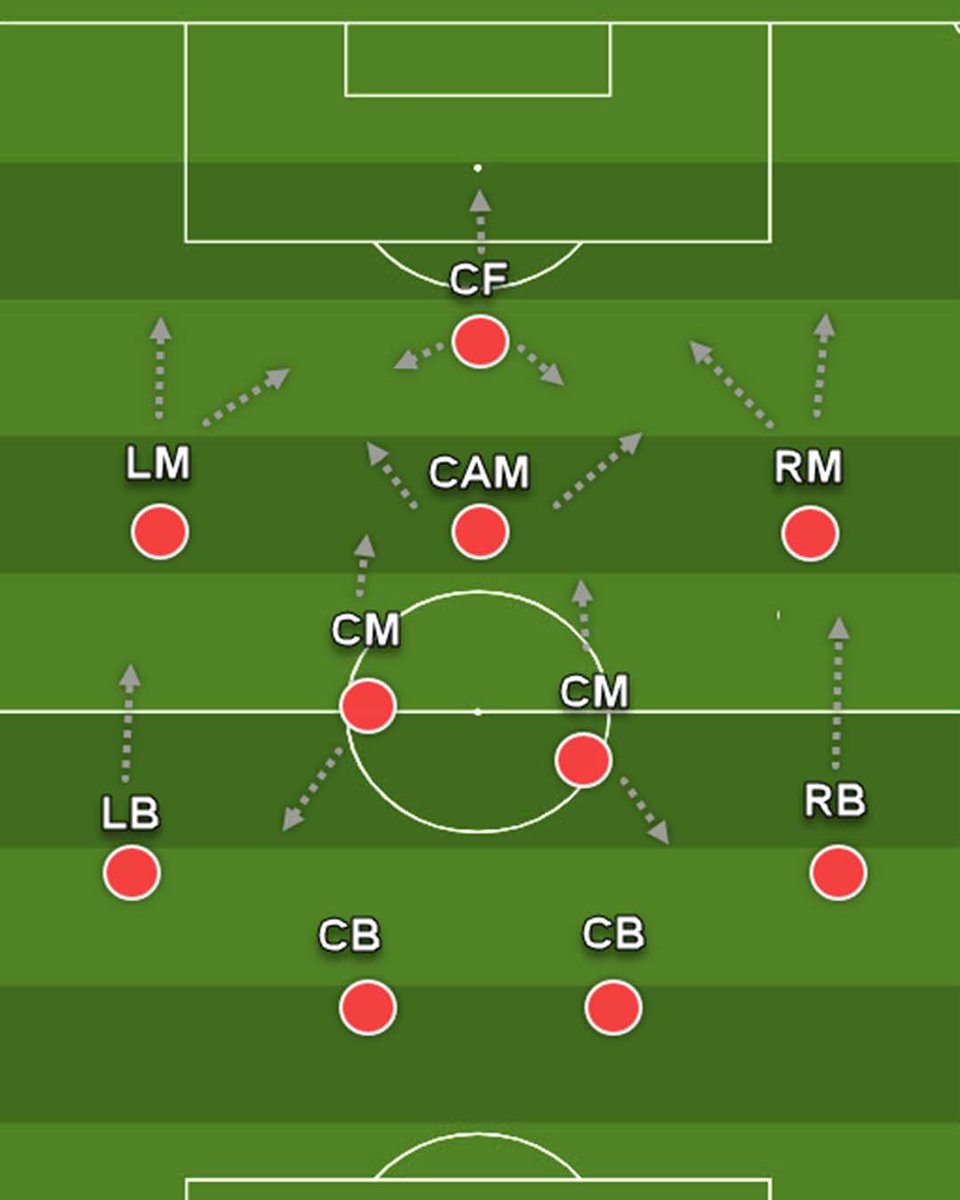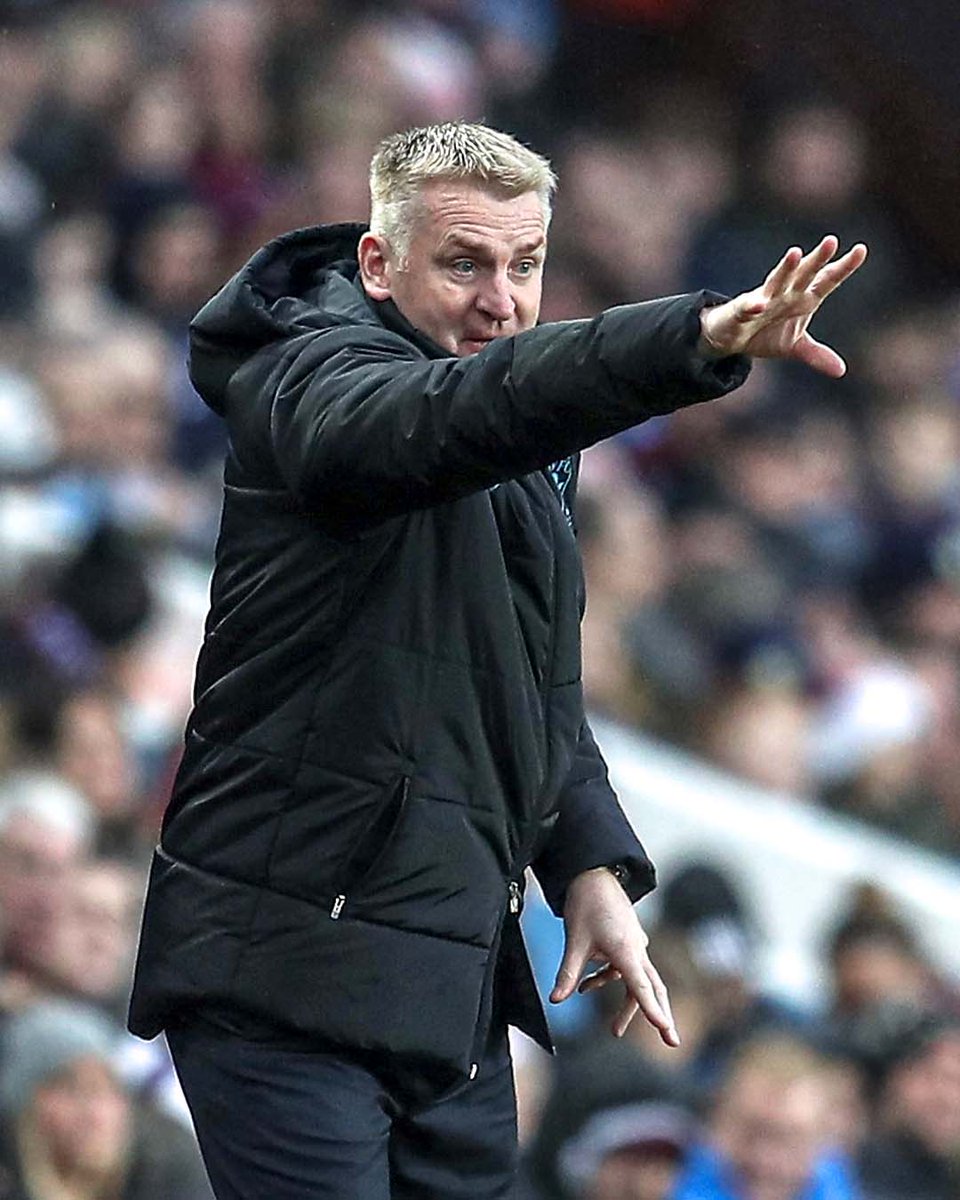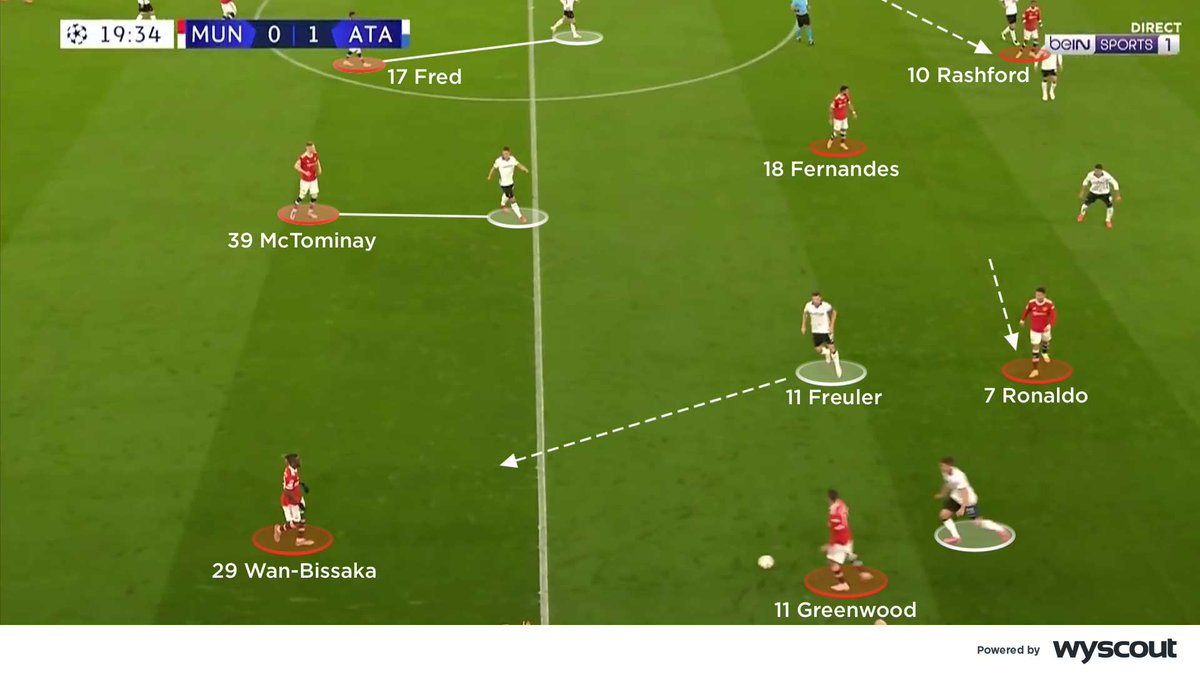
Thread 🧵
Double pivot explained... 👥
Double pivot explained... 👥
A double pivot is a withdrawn central-midfield or defensive-midfield pairing. They are positioned in front of the central defenders, inside the full-backs, and behind the attacking midfielders. The duo is most commonly used in a 4-2-3-1, operating behind a 10... 👥🧵 

In the 1980s, Brazil played in a 4-2-2-2, with Falcão and Cerezo in front of the defence and behind Zico and Socrates. This evolved, into something resembling a 4-2-3-1. One of the centre-forwards dropped back, and the attacking midfielders moved wider to form a three... 👥🧵 

The players in a double pivot must possess awareness and understanding of spaces and pressure, especially in central areas. These two players operate mostly underneath the attacking unit, so one has licence to support attacks with late forward runs... 👥🧵 

The double pivot must provide protection for the centre-backs, so they need to communicate well and be disciplined and organised enough to help maintain a defensive block. Knowing when to leave their slot to press, or move out as cover for a wide player, is also key... 👥🧵 

Under Nagelsmann, Bayern often employ a double pivot featuring Kimmich and Goretzka who provide good protection and defensive presence out of possession. Kimmich has experience at full-back, meaning he can defend effectively in one-on-one situations... 👥🧵 

Soucek and Rice combine to create a formidable pairing for West Ham’s midfield under Moyes. They provide fantastic protection for the back four, with both exceptional in individual duels. They also press superbly, and work back to cover behind their centre-backs... 👥🧵 

AC Milan tend to set up with a double pivot comprising two of Sandro Tonali, Franck Kessié or Ismaël Bennacer. One drops into the back line during build-up, creating a three-man first line with the centre-backs... 👥🧵 

Which other teams have used a double pivot successfully?
• 2008/09 Liverpool under Rafa Benítez: Xabi Alonso and Javier Mascherano.
• 2014/15 Chelsea under José Mourinho: Cesc Fàbregas and Nemanja Matic.
• 2018 France under Didier Deschamps: N’Golo Kanté and Paul Pogba.


• 2008/09 Liverpool under Rafa Benítez: Xabi Alonso and Javier Mascherano.
• 2014/15 Chelsea under José Mourinho: Cesc Fàbregas and Nemanja Matic.
• 2018 France under Didier Deschamps: N’Golo Kanté and Paul Pogba.



• • •
Missing some Tweet in this thread? You can try to
force a refresh














